Over the years we’ve observed a number of very successful projects. What is the secret to a great interior space you ask? Well, we have 5 of them. In part 2 of our series, we’ll explain why a reasonable design and construction schedule is necessary if you want your commercial space to really impress your clientele.
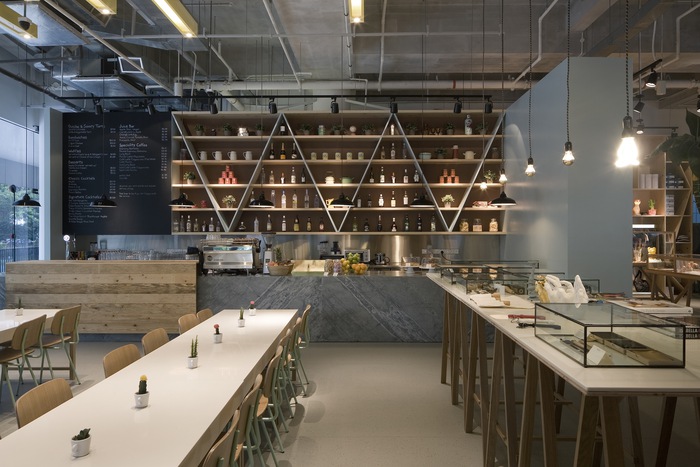 Projects like the one pictured above (designed by Takenouchi Webb) don’t happen overnight. Successful projects take time, so plan ahead.
Projects like the one pictured above (designed by Takenouchi Webb) don’t happen overnight. Successful projects take time, so plan ahead.
Tip #2: Plan ahead, allow time for design and construction.
Two words: Restaurant Makeover. We’ve all seen the show. Isn’t it amazing how fast they design, deconstruct, and refresh those dreadful spaces? Don’t believe everything you see on TV; from our experience there is no possible way that a quality space can result from such a rapid schedule.
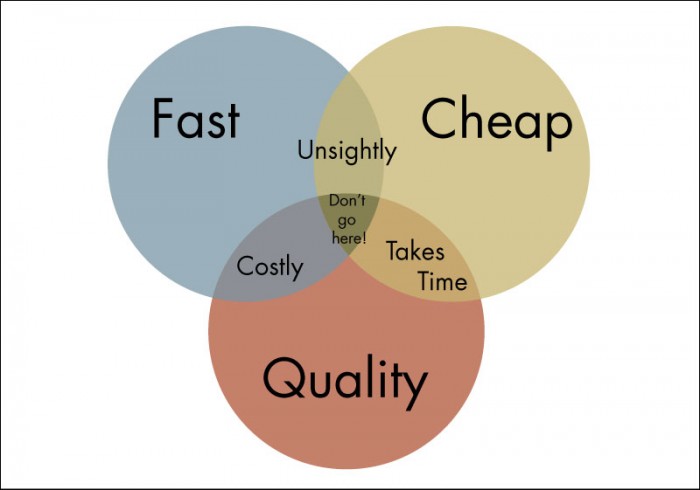
When planning for an interiors project it’s essential to consider the balance between price, style, and schedule. Remember, it’s not possible to have all three in equal amounts.
As much as our clients hate hearing it, design really does take time. Depending on the size of the space and the project goals, design will typically require a period of 5 weeks or more. Surprised? Well let us explain why by stepping you through each design phase. Below is an outline of the typical design process (learn more about our interior design process).
Phase 1: Programming
Your designer will work with you to explore your goals and listen to your ideas. This is where we learn about your business, your customers, and your competitors. Depending on the size of your project and the complexity of your business this phase could take as little as a few days, but more typically (for small to medium sized projects under 10,000 sq. ft.) a couple weeks.
Phase 2: Schematic Design
By exploring all available options, your designer will begin to craft the new layout for your space. Through this process both you and your designer will gain a better understanding of inefficiencies that may exist within the current layout and how to make your space functional, safe, and accessible. It is extremely important that this phase of the project is not rushed. Why? It is very difficult and often expensive to change your layout down the road if it doesn’t perform as required. A good layout is the foundation to a productive interior space.
Phase 3: Design Development
This is when the concept for your space really begins to take shape. Your designer will carefully consider your brand, your target market, your various business functions, your project schedule and your budget when selecting finishes, furniture, and fixtures for your space; this takes time!
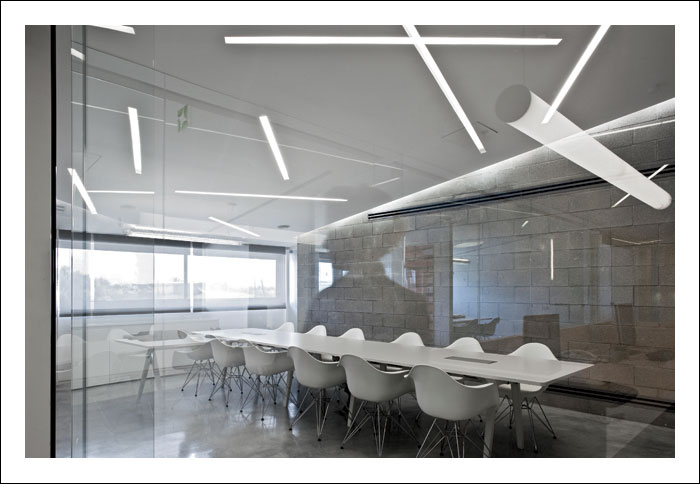
The layout, the finishes, the furniture, and fixtures were all carefully considered in this boardroom space designed by Axelrod Design.
Your designer should also purchase furnishings for the project during this phase. Our clients are often surprised to learn that furniture could take 6-8 weeks for fabrication and delivery; the sooner it can be ordered, the better. How disappointing would it be to have a completed interior space, but no furniture?
Phase 4: Contract Documents
In order to obtain pricing and to move forward with construction your designer will need to create a drawing and specification package. The more detail your designer can add to the drawings, the more accurate a price you will obtain from the contractor and the smoother the construction process will be.
Phase 5: Tender
If you want to obtain the right combination of price, quality, and schedule we always recommend that 3 or more contractors are invited to bid on the project through a tender. We like to allow 2-3 weeks for project tender. The best way to obtain accurate pricing that meets the intention of the design plan? Allow enough time for the contractors to gather the information.
Phase 6: Construction & Project Admin
The tender process will allow each bidding contractor to provide a timeline for construction. During this phase the contractor will order all the fixtures, finishes, and materials to construct the space. Lead times vary; items such as lighting, plumbing fixtures, specialty finishes, signage, and doors can all take 4-8 weeks to arrive. If any of those items are specified for the project, a minimum of 6 weeks is required for a fully completed space once the contractor has been hired. During this time, your designer will communicate with the contractor and complete site visits to review the quality of work being completed.
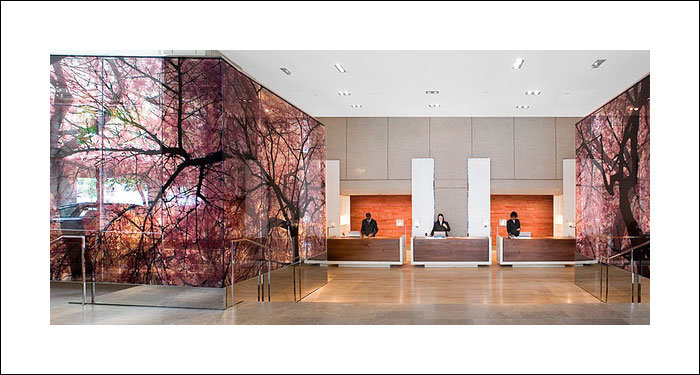
There are many benefits to planning ahead. Give yourself adequate time to make the right decisions, invest your money wisely, and build a space that will last for years to come. The owners of the space pictured above surely did just that.
We hope that you’ve learned a little bit more about the design process. We’re sure you can appreciate all the work that occurs before you actually open your doors to customers, but what are the benefits to having a realistic design and construction timeline?
Make the Right Decisions
The right decisions are not made on the fly. If you want to make the best decisions for your business and your clientele careful consideration regarding the function of a space, its flexibility for future growth, and how it all relates to the brand is necessary.
Spend Your Money Wisely
Your design team wants to ensure that you are investing money in a way that will benefit your business long term. To do this your designer needs time to explore and consider the options available and devise quality solutions. It would be a shame to spend money updating your space only to realize 6 months or a year down the road that it’s no longer working.
It’s also important to note that a short construction period forces your contractor to work after hours. In our experience, this always adds to the cost of construction.
Build a Space that Will Last
Quality is so important in a commercial space. Businesses are active places, so it’s essential that the floors, walls, furniture, and millwork stand up to the wear and tear. Sourcing high quality finishes and installing them properly takes a bit more time. If you want your space to last for years to come, allow time for your designer to make informed choices and for your contractor to complete the work.
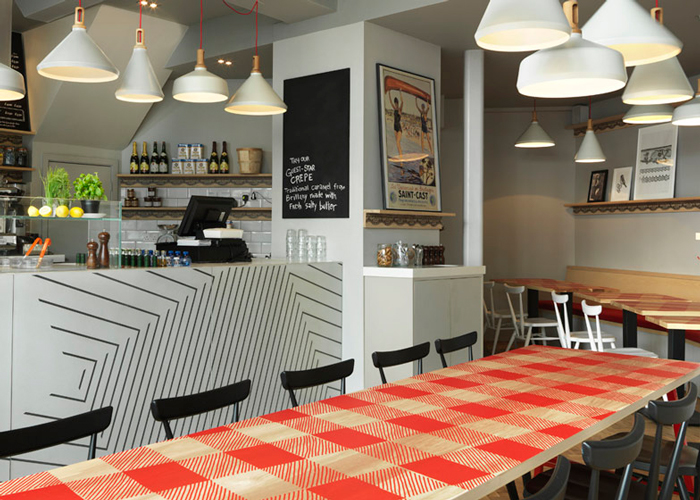
Strong ideas like the dressed up tables in La Petite Bretagne Crepery (designed by Paul Crofts Studio) take time to devise. Make your best first impression, enjoy the design process, and potentially speed up the construction process by allowing your designer more time to create.
Enjoy the Process
With adequate time allotted to design and construction, you, your designer and your contractor can all enjoy the process. We often find when projects are rushed mistakes are made. Most of these mistakes or problems could have easily been avoided with a sufficient schedule.
Reduce the Time Needed for 100% Completion
Yes, this post is about allowing more time for construction, not less time but let us explain with an example. A past client was only able to allow 2 weeks for construction when a minimum of 3-4 weeks was required. The contractor was forced to prioritize; with only 2 weeks he could only complete items that would render the business operational again. So, after that 2-week period, the business was able to open, however, there was a very long list of remaining work that needed to be finished. All outstanding work had to be completed after hours, so the construction period lagged on for several weeks afterwards. Had 3 or 4 weeks been provided for construction, the project would not have taken so long (and would have cost less).
Make the Best First impression
This leads us to our last point – making a great first impression. For the example above, a partially completed space on opening day did not leave our client’s customers with the desired first impression. Put your best foot forward by allowing enough time for construction and design.
We hope this information inspires you to plan ahead and allow more time for design and construction. Check back often, we don’t want you to miss our remaining 3 tips. Did you miss tip #1? No problem, read about it by clicking here.